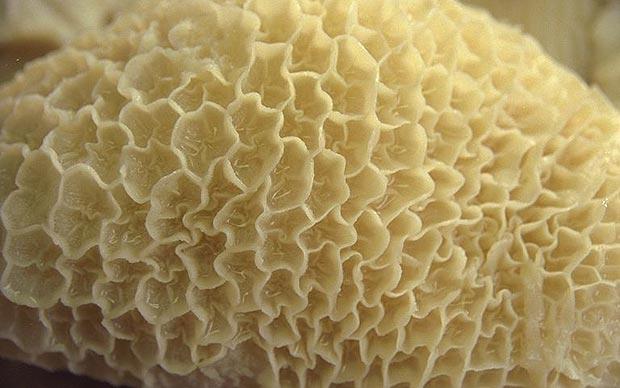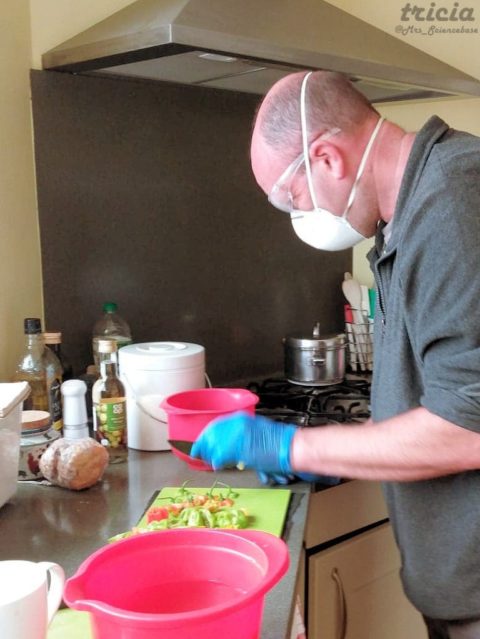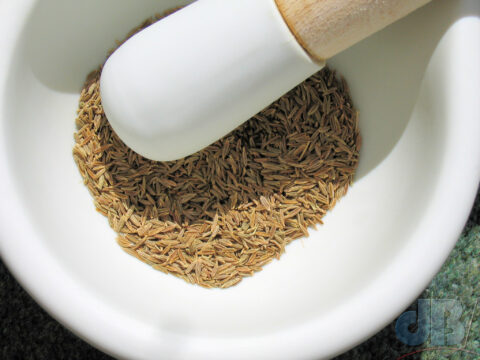TL:DR – Trypophobia is a fear or aversion to seeing clusters of holes.
Trypophobia is the name for the phobia (intense and apparently irrational fear) of irregular patterns or clusters of small holes or bumps. The term was coined by a web user back in 2005 on an internet forum. I always assumed its etymology lies in the word tripe and the Greek work for fear, maybe that is what she was thinking of. I find tripe repellant to look at (and eat, come to that).

It’s a weird one though isn’t it…why should anyone be scared of holes or bumps? Well, food full of holes might be rotten, whereas bumps might be present on food or skin because of disease. So, it could be that is the explanation. A subconscious response to seeing something that might cause harm.

But, as with lots of so-called irrational fears, nobody really knows. It seems like it’s not irrational to shy away from rotten food or snakes, or potentially lethal spiders, or being up high or trapped or exposed or whatever.
Me, I remember I had a dream as a child where my grandmother had a hole in her face from which were emerging lots of tiny flies, it was just a dream, but I still recall it and it makes my face tingle thinking about it. As does looking at some of those trypophobia triggers people post on the net, pictures of seed heads with holes, or photoshopped faces with lots of holes peppered in the skin. I’m not scared of any of these things as such, they just make my face tingle when I look at them or even just think about them.
I have a friend who has trypophobia who doesn’t like to see clusters of holes either, but she is also perturbed by seeing lots of the same animals, like insects or even flocks of birds. Again, the irrationality of it can be explained as perfectly rational if you think about the threat from certain insects or even birds.
In 2013, researchers Geoff Cole and Arnold Wilkins did a spectral analysis of visual trypophobia triggers and recognised that the same characteristics in those images are present in images of the skin and fur patterns of dangerous animals. So, maybe that’s part of the origins of this irrational fear too.
Trypophobia is yet to be officially recognised as a real condition, but for those of us who recognise the symptoms, it is very much a real condition, we just have to wait for the rest of the world to catch up. Some people have an extreme response to triggers while it is a very mild condition for some of us trypophobics.
The converse effect of the skin-crawling feeling of trypophobia is perhaps that pleasurable ASMR (Autonomous sensory meridian response) that certain sounds and images trigger. I first knew of the ASMR response when I listened to the Mike Oldfield album Platinum on headphones back in 1979. There is a track, Charleston, on that album which has a whispering scat section that flips back and forth through the stereo field and gives some listeners an ASMR type frisson, me included!
I originally wrote this post for my Sciscoop site back in May 2016 but noticed a lot of people reaching Sciencebase looking for trypophobia information and images. If you want to find images, any search engine prompted with the term trypophobia triggers, will do the job, there are so many real-world examples as well as artistic images that have been created as triggers. But, be warned, they could make your flesh crawl or give you goosebumps.
The correct spelling is trypophobia, but people are searching and landing here using misspellings including tryphobia, typhobia, thripopobia.


